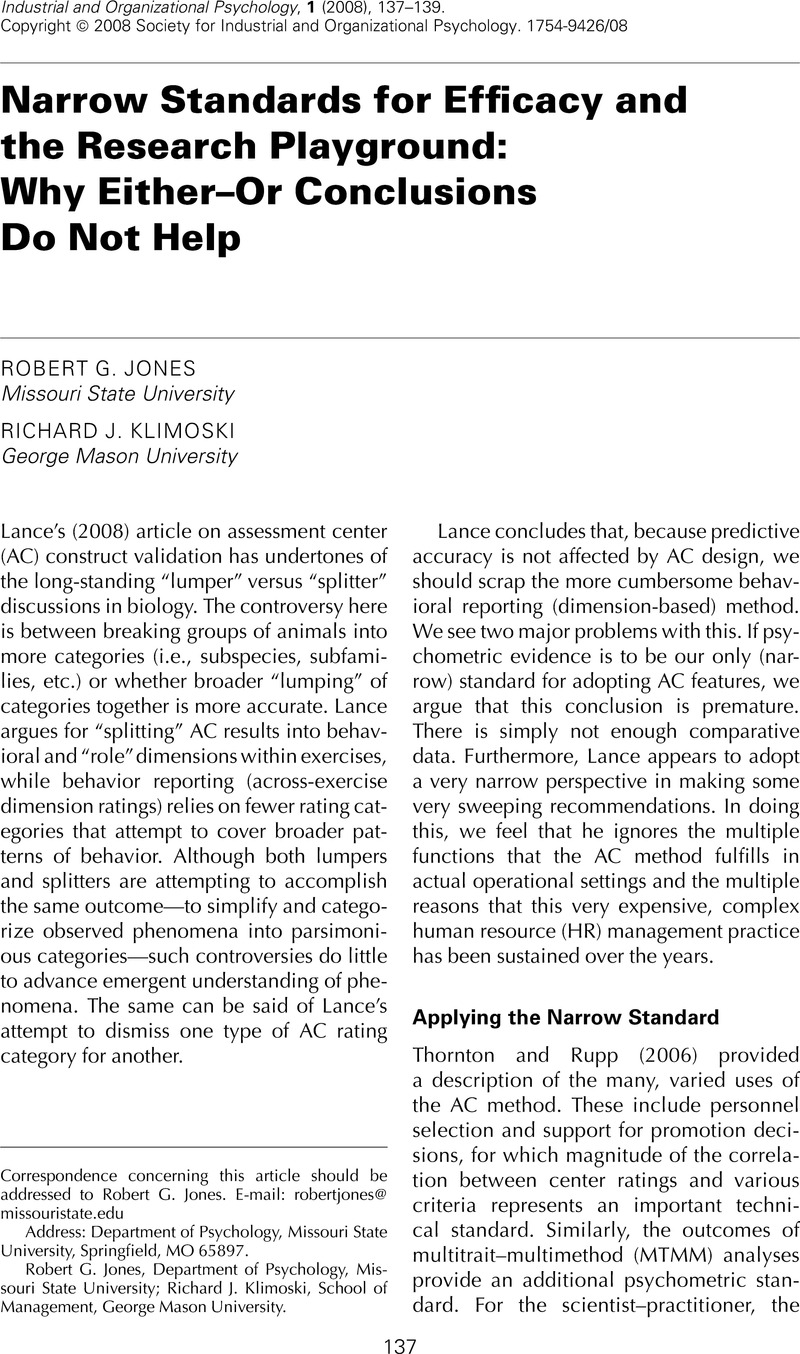Article contents
Narrow Standards for Efficacy and the Research Playground: Why Either–Or Conclusions Do Not Help
Published online by Cambridge University Press: 07 January 2015
Abstract

- Type
- Commentaries
- Information
- Copyright
- Copyright © Society for Industrial and Organizational Psychology 2008
Footnotes
Department of Psychology, Missouri State University
School of Management, George Mason University
References
- 3
- Cited by


